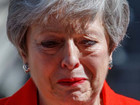US and Chinese negotiators have agreed to further meetings next month after brief talks in Shanghai resurrected discussions on ending the trade war between the world's two biggest economies.
 Full Story
Full Story
Teodoro Obiang Nguema, president of Equatorial Guinea for 40 years on Saturday, is the world's longest-serving living leader apart from Britain's Queen Elizabeth II, on the throne for 67 years.
 Full Story
Full Story
Boko Haram started out as an Islamist group railing against corrupt officials in northeast Nigeria but its decade-long insurgency has now devastated the region.
 Full Story
Full Story
Iran's seizure and continued detention of a UK-flagged tanker deals Boris Johnson an immediate loyalty test: Britain's new prime minister may have to choose between Gulf escorts led by Europe or the United States.
Which way Johnson leans could set the tone for a complex agenda that includes withdrawing from the EU, striking a trade deal with the US, and maintaining or breaking European efforts to keep alive the deal curbing Iran's nuclear ambitions.
 Full Story
Full Story
Britain's incoming prime minister Boris Johnson has bet big on a risky Brexit strategy that he hopes will take the UK out of the EU on favourable terms.
 Full Story
Full Story
Theresa May had a mission to fight Britain's "burning injustices" through strong and stable leadership -- but her legacy as prime minister will be anything but.
 Full Story
Full Story
Tensions in the Gulf have escalated in recent months amid a deepening standoff between Iran and United States over Tehran's nuclear programme, with a string of incidents involving tankers and drones.
 Full Story
Full Story
Just days after protest leaders and Sudan's ruling generals agreed a power sharing deal, they are set to meet again on Friday for talks on key remaining issues.
The two sides inked an accord Wednesday to form a joint ruling body tasked with creating a transitional civilian administration that would govern for just over three years -- a key demand of protesters.
 Full Story
Full Story
A labyrinth of concrete blast walls, spotlights, and checkpoints are eating up ever more of Kabul, standing in stark contrast to a similar area in Iraq's Baghdad where easing tensions have seen its barricades come down.
The tale of the two "Green Zones" provides a snapshot of the dramatically changing nature of the Afghan conflict, long overshadowed by the war in Iraq where multiple insurgiences following the toppling of Saddam Hussain in 2003 turned Baghdad into a warzone.
 Full Story
Full Story
West Africa suffers the most inequalities on the continent but many governments prefer to ignore problems despite economic growth, a report by Oxfam and Development Finance International said on Tuesday.
 Full Story
Full Story



